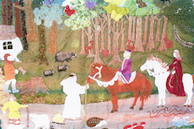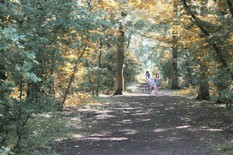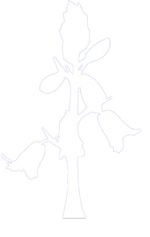History
Putnoe Wood

Putnoe wood has a long history and was once part of a much larger wooded landscape. The area was first recorded in the Domesday Book in 1086 as Salf End and Buckelowe (Putnoe) with the tenant in chief being named as Hugh of Beauchamp, before this date In 1066 being the property of Anschil or Asketill a name of Scandinavian origin. The name in its present form has been around since the 16th Century, but was formely known as 'Puttenhoe' and 'Putenho' indicating the spur or 'hoh' of land belonging to an unknown Anglo-Saxon settler Putta, hence 'Puttas-hoe'. During the 12th century Putnoe Manor and its lands was endowed to the Cistercian Abbey of Warden and remained in the possession of the monastry until the dissolution in 1537. In 1224, Considerable damage was done to Putnoe Wood during the nine weeks siege of Bedford Castle. WI Poem. 

The Royal forces of Henry III using the wood as a convenient source of timber. Warden Abbey demanded and received annual compensation for their ravaged woodland during the remainder of the King's lifetime. This was renewed in 1304 for a further 20 years. A full century was needed for the complete recovery of the wood. The Manor of Putnoe estate was purchased by John Gostwick of Willington in 1539 and the family retained it for two hundred years. A letter written by Sir John Gostwick instructing his son on how to farm Putnoe and Mowsbury says:
'Also leape in your handes Mosbury with such pastures as shalbe a boute yt, lyke as I shall leave theim to you by Godes Grace. And in theim you may feed your bestes and muttons for your howshold, and bring upp yong cattell, and theire may goo your geldings in somer & winter, such as ye do not occupie.'  Later owners include The Dukes of Bedford one of whom in 1871 held the title of Lord of the Manor of Putnoe.
Later owners include The Dukes of Bedford one of whom in 1871 held the title of Lord of the Manor of Putnoe.
In 1798, the first botanical records of Putnoe Wood were recorded in Charles Abbot's 'Flora Bedfordiensis', Charles Abbot was a well known local parson and botanist. He was vicar of Oakley Raynes and Goldington, in Bedfordshire, Usher of Bedford School, 1787-1817, and chaplain to the Marquis of Tweeddale. His writings include the manuscript 'Catalogus plantarum'; a list of 956 plants of Bedfordshire, and a later book on the same subject, called Flora Bedfordiensis. He is noted for making, in 1798, the first capture in England of Papilio paniscus, the Chequered Skipper. Abbott died in Bedford in September 1817. His herbarium, prepared by his wife, is preserved at Turvey Abbey. Up until 1934 the wood had been part of Goldington Parish but when Goldington village was absorbed into Bedford it was transferred to Ravensden.
The Wood as it is today was purchased by Bedfordshire County Council in the mid twentieth century from the proceeds of the sale for the present Midland Road Station and now is owned and managed by Bedford Borough Council.
Additional information, History timeline and WI poem can be found on the Information Page.
 Later owners include The Dukes of Bedford one of whom in 1871 held the title of Lord of the Manor of Putnoe.
Later owners include The Dukes of Bedford one of whom in 1871 held the title of Lord of the Manor of Putnoe.In 1798, the first botanical records of Putnoe Wood were recorded in Charles Abbot's 'Flora Bedfordiensis', Charles Abbot was a well known local parson and botanist. He was vicar of Oakley Raynes and Goldington, in Bedfordshire, Usher of Bedford School, 1787-1817, and chaplain to the Marquis of Tweeddale. His writings include the manuscript 'Catalogus plantarum'; a list of 956 plants of Bedfordshire, and a later book on the same subject, called Flora Bedfordiensis. He is noted for making, in 1798, the first capture in England of Papilio paniscus, the Chequered Skipper. Abbott died in Bedford in September 1817. His herbarium, prepared by his wife, is preserved at Turvey Abbey. Up until 1934 the wood had been part of Goldington Parish but when Goldington village was absorbed into Bedford it was transferred to Ravensden.
The Wood as it is today was purchased by Bedfordshire County Council in the mid twentieth century from the proceeds of the sale for the present Midland Road Station and now is owned and managed by Bedford Borough Council.
Additional information, History timeline and WI poem can be found on the Information Page.

